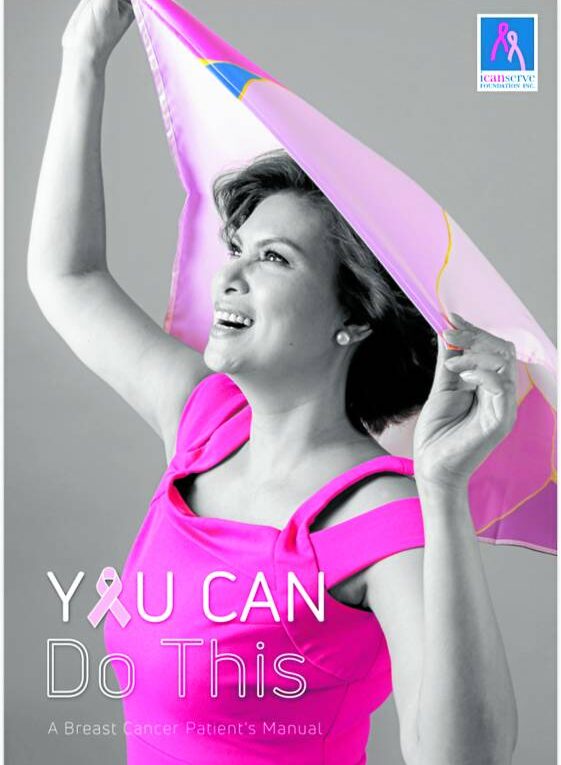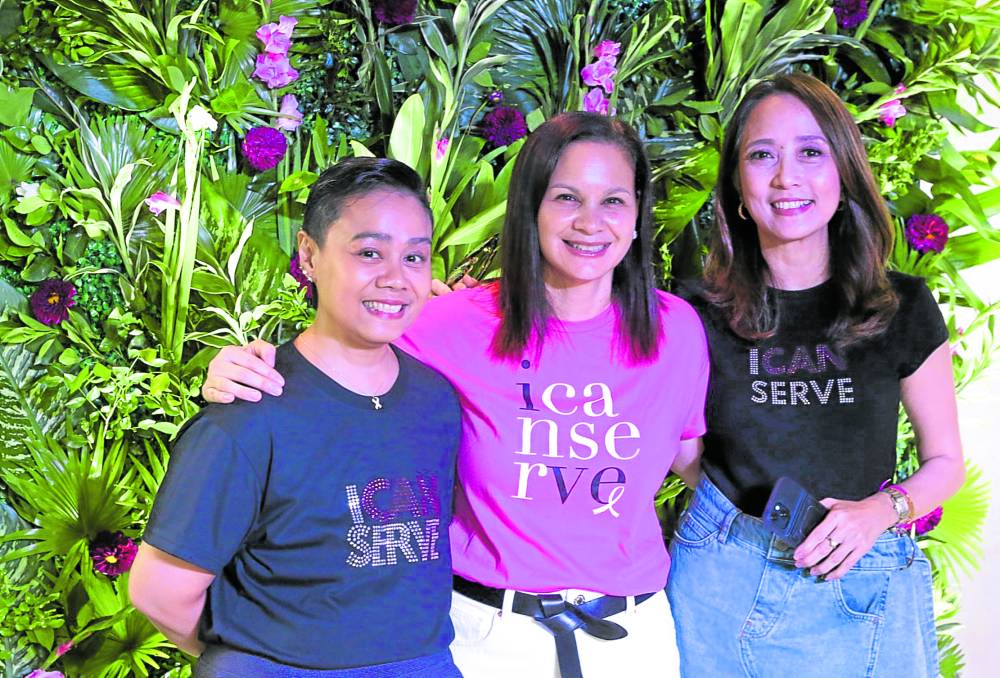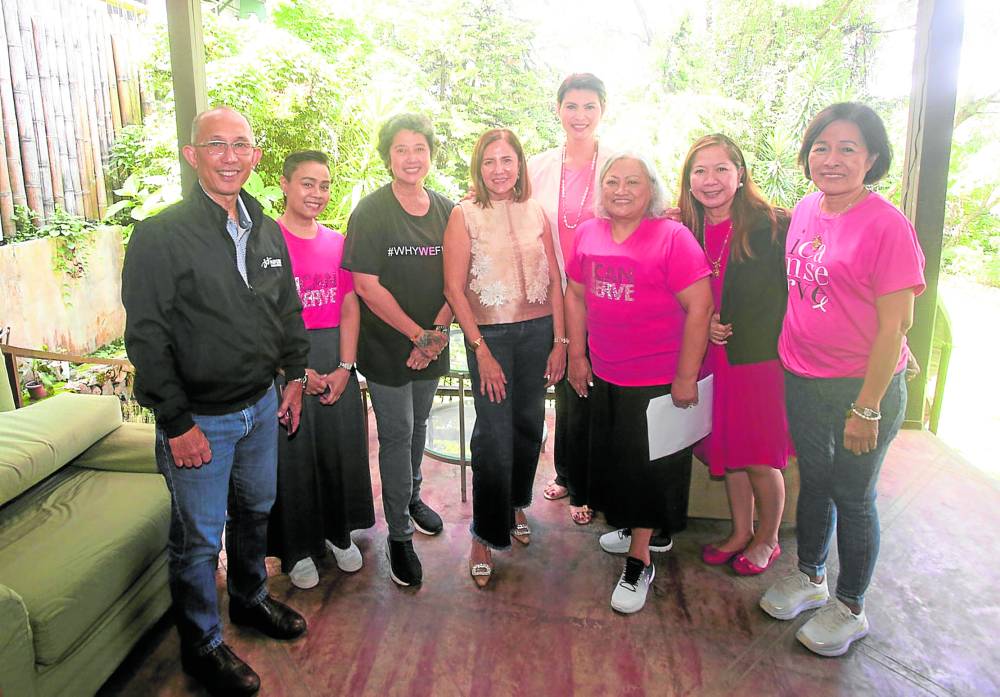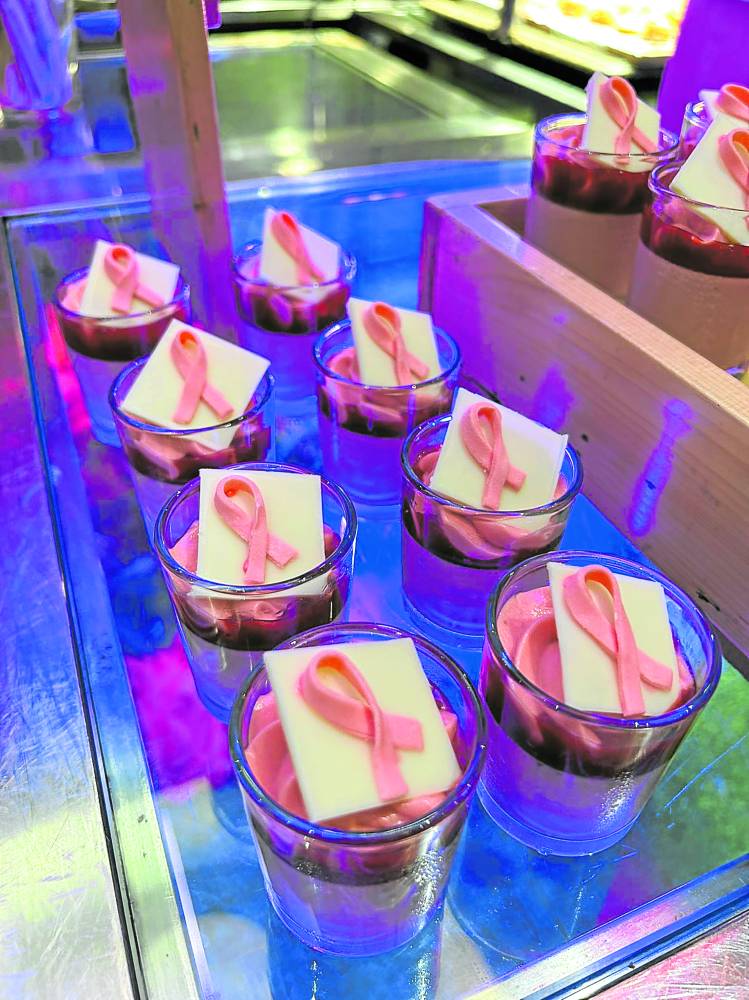
After I was diagnosed with stage 2a invasive ductal carcinoma (a.k.a. breast cancer) on June 7, 2013, my friend Stella sent me a copy of a patients’ manual from Australia that explained everything. I knew that ICanServe (ICS), the breast cancer advocacy group that pushes for early detection and which I joined as a volunteer soon after diagnosis, had come up with a manual over 20 years earlier, complete with tons of pictures and helpful information.
There were no longer any available copies, however, so although the Australian version—which I have since passed on to other women—represented a different culture, it was still a huge help and a universal experience in many ways. Terms like ER/PR positive/negative, her2neu, bi-rads and mastectomy vs lumpectomy were clarified for me.
Thus, when my dear friend, ICS founding president Kara Magsanoc-Alikpala, invited me on the team that would come up with an updated version of the manual in time for the Southeast Asian Breast Cancer Symposium (SEABCS) hosted by the Philippines on Sept. 23 to Sept. 25, 2022, it was both an honor and a perfect opportunity.
The Philippines now has some of the highest breast cancer rates in Asia, and people are stepping up. Hospitals are updated on the latest technology (check out the mammogram + ultrasound discounted packages usually offered in October), enlightened local government units (LGUs) implementing ICS’ “Ating Dibdibin” early detection program are allocating budgets for it, and even insurance companies are zooming in; AIA, for example, has an annual “Breast Cancer Protect” program that pays out P50,000 straight away upon diagnosis for anyone ages 18 to 50.
In the fight against cancer, however, knowledge is and always will be power, and does much to address both the overwhelming perception of this disease as an automatic death sentence—it isn’t—and the fear and stigma associated with the diagnosis. For the record, breast cancer survivors are among the liveliest, wisest, most resilient, most ebullient, most “alive” women I have ever met in my life, and I count myself blessed to be among their ranks.
Palatable

My job was to take the hard work of volunteer writers and researchers, vetted by medical experts and make it more palatable for and understandable by even the most clueless reader. By palatable, we meant, how can we make this sound like advice from a friend, never condescending, never exclusive and still optimistic, while not sugarcoating the reality that cancer is a tough foe?
“If you are a woman, wherever you may be, who is living with breast cancer, or has just been diagnosed with breast cancer, and you have a tornado of questions swirling around in your head—well, this is for you,” the foreword reads. “This manual has been put together, with much love, diligence, hope and infinite understanding by breast cancer survivors from the Philippines. We have been on that journey, and we are here to tell you that breast cancer can be beaten—and there are many beautiful, sometimes heartbreaking, but always meaningful lessons to be learned and shared along the way.”
I think the title of Kara’s message also says it well: “Sending you a hug.” And to drive home the point, we titled it “You Can Do This: A Breast Cancer Patient’s Manual.”
It took a couple of months for the volunteer writers and researchers to put everything together, and a few more frenzied weeks for us to finalize the outline, edit it down to the essentials, squeeze in a wealth of anecdotes, resources, quotes from doctors, pictures and step-by-step guides.
Project managers were Gina Torres Evangelista and Ma. Victoria G. Arjona, while writers were Ma. Victoria G. Arjona, Giselle Arroyo, Gina Torres Evangelista, Carla Paras-Sison, Pie Valencia and myself.
Whitewall Design Studio designed our manual, and Jar Concengco took the lovely cover photograph of survivor Abbygale Arenas-de Leon, image consultant and former model and beauty queen, waving a kintsugi-inspired scarf designed by survivor and artist Christina Dy.
Seven medical consultants helped us ensure the science we presented was sound: breast surgeons Dr. Eillen A. Borje and Dr. Remi Karis M. Velasco, family and palliative medicine specialist Dr. Rumalie “Mae” Alparque-Corvera, pediatric infectious disease specialist and survivor Dr. Anna Lisa Ong-Lim, psycho-oncologist Dr. Maria Madeline “Maddie” Mallillin, medical oncologist Dr. Mary Claire V. Soliman, and the venerable Dr. Corazon Ngelangel of the National Integrated Cancer Control Council. Thus, subjects covered range from detection and screening, treatment, and survivorship, to palliative care and other issues, including money, a big worry, considering the heavy financial burden of cancer care in this country.
Total care

I am especially proud of two additional subjects we covered in this edition, which were not even on the horizon years ago: mental health, a serious concern on its own these days, and palliative care, which has now come to mean total supportive care from the beginning of survivorship, and not just an end-of-life focus.
A year after presenting the manual to the public for the first time at SEABCS 2022, we formally launched it in three languages—English, Filipino, and Cebuano—with more versions to follow. Last Sept. 14 marked the launch of the English manual at the 1120 Club in Makati, led by Kara, ICS president Nikoy de Guzman, and chairperson Crisann Celdran, and with many of our ICS sisters and doctor-consultants in attendance.
Dr. Ngelangel, a pioneer of medical oncology in the Philippines, paid us a huge compliment in her message when she said, “This manual empowers women to take charge of their well-being through self-education, self-assessment, and self-reliance.”
On Sept. 26, we launched the manual at Hill Station in Baguio City, where ICS volunteer, head of local support group Minda’s Buddies, and force of nature Ma. Victoria “Ambick” Bugasto gathered media, supporters, and even Mayor Benjie Magalong and his wife Arlene, who joined us for lunch and helped us unveil the cover along with cover girl Abby. Mayor Magalong was so impressed that he pledged some of the proceeds of various local fundraising efforts, including a golf tournament, to ICS.
Also a treat at the Baguio launch was meeting Eliseo “Boy” Balariz Jr., 67, a husband and father of five who used to run a canteen at St. Louis University—one of the few Filipino men to be diagnosed with breast cancer, and one of even fewer willing to talk about it.
He remembers being elbowed in the chest during a basketball game in 2018, and feeling a significant amount of pain. He was diagnosed in 2020 with stage 2 breast cancer, and had surgery, six rounds of chemotherapy, and radiation. “Why should I be ashamed?” he said in Filipino, when asked why he was open about it. “It’s an illness, and men can get it, so they should know. But my wife was even more worried about it than I was,” he said with a chuckle.
Pink hors d’oeuvres

Ambick’s friend, Councilor Betty Lourdes Tabanda, noted wisely that while survivors at the event were cheerful and optimistic, not every woman who faced the disease had the luxury of such optimism, especially when they couldn’t afford treatment. She promised to promote the manual and push for assistance among local health committees in Baguio.
Finally, last Oct. 5, our ICS team flew into Cebu for the day to launch the manual in Cebuano at the Seda Hotel Ayala Center Cebu, which sponsored the event, led by their gracious general manager Gwen de la Cruz. Even the hotel’s mascot, a teddy bear named Seddy, was decked out in pink, and Seda’s kitchen came up with a delightful spread of pink-themed hors d’oeuvres, including cheesecake cups adorned with the pink ribbon, washed down with pink lemonade and a pink non-alcoholic piña colada.
ICS Cebu, led by Mary Anne Solomon, is a dynamic bunch; the day we flew in, they had just come from a press conference in the morning, met their Manila sisters for lunch in matching T-shirts and pink sneakers, and ran off to a pink Zumba session after the launch.
Twenty-year survivor Nelia Navarro and ICS’ Nikoy welcomed guests, and Dr. Tess Annette Libron, ICS communications whiz Giselle, and I fielded questions during a lively open forum. We unveiled the Cebuano version, “Kaya Ni Nimo,” to much applause.
Probably the best thing about this baby of ours is that it’s digital, and it can be downloaded, clicked on, read, and even tweaked by interested groups—for absolutely free. In remote places where internet remains an issue, LGUs and NGOs are encouraged to spring for the costs of simply printing out the 106-page guide.
To quote Kara again, the manual is a “love letter” from survivors to our sisters who are just now facing breast cancer—and an assurance that they are certainly not alone on the journey.
Visit https://www.icanservefoundation.org/ to download a copy of the manual.










































